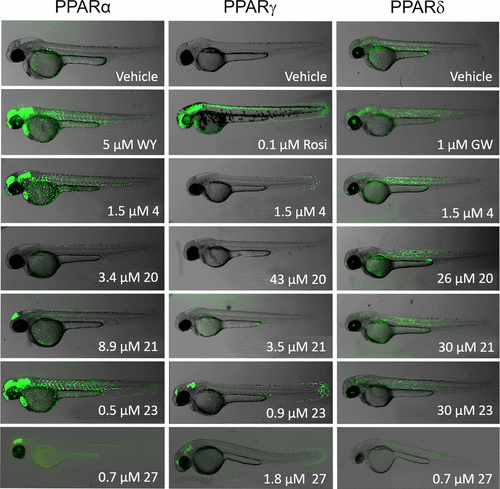Fig. 7
- ID
- ZDB-FIG-230224-21
- Publication
- Sahin et al., 2022 - Phenolic Lipids Derived from Cashew Nut Shell Liquid to Treat Metabolic Diseases
- Other Figures
- (all 9)
- All Figure Page
- Back to All Figure Page
|
Figure 7. In vivo testing of CNSL derivatives using transgenic zebrafish that express human PPARα, PPARγ, or PPARδ reveal tissue-specific activation. Activation of human PPAR in the zebrafish embryo results in GFP expression. Basal activity of PPARα, PPARγ, and PPARδ is observed with vehicle (DMSO) treatment and is strongly increased in the presence of the full agonist for each receptor. Positive controls are WY (WY14643) for PPARα, Rosi (rosiglitazone) for PPARγ, and GW (GW0742) for PPARδ, respectively. Compounds were screened at their respective EC50’s determined from their dose–response curves in HEK293 cells with a few exceptions: 4 was screened at 1.5 μM for all receptors because of toxicity at higher concentrations; for PPARδ, 20 and 27 were screened below their EC50’s due to toxicity at higher concentrations. Each image depicts a representative embryo. Note that embryos incubated with 27 were imaged using a different microscope. |

